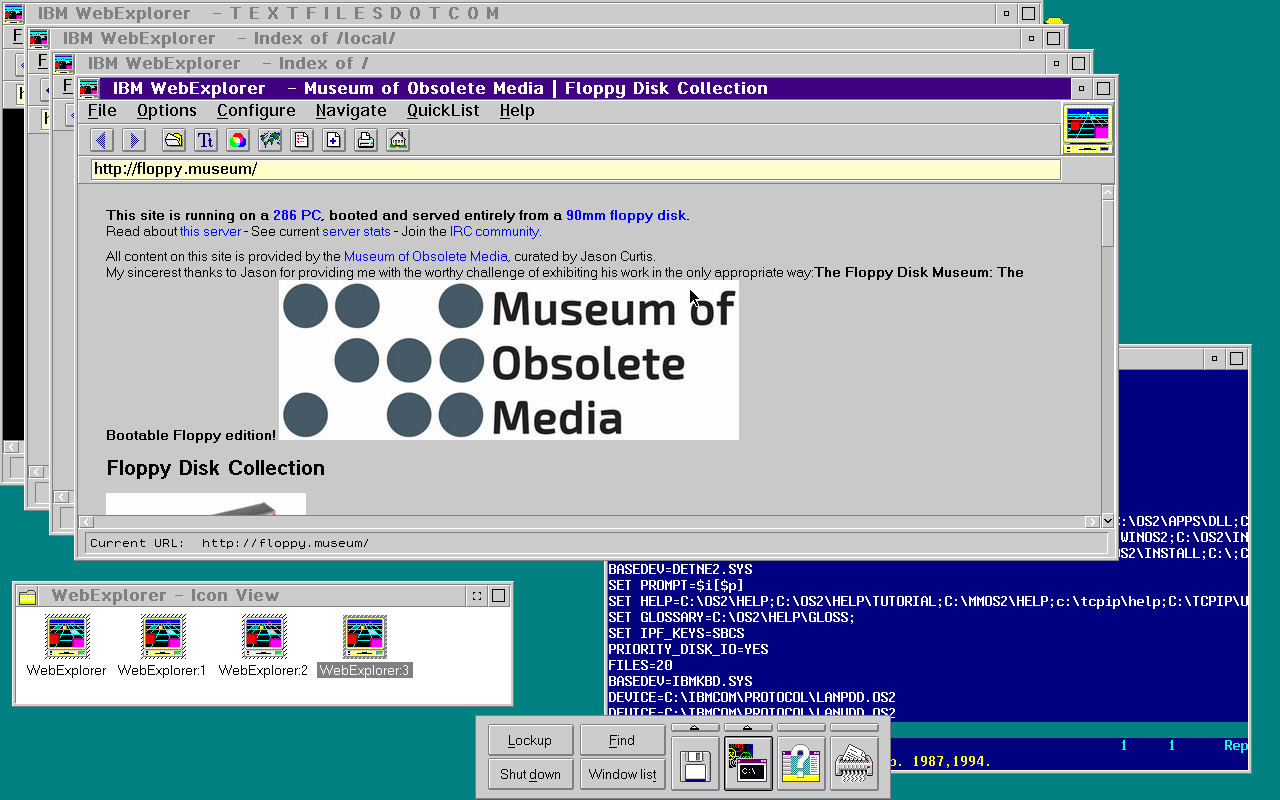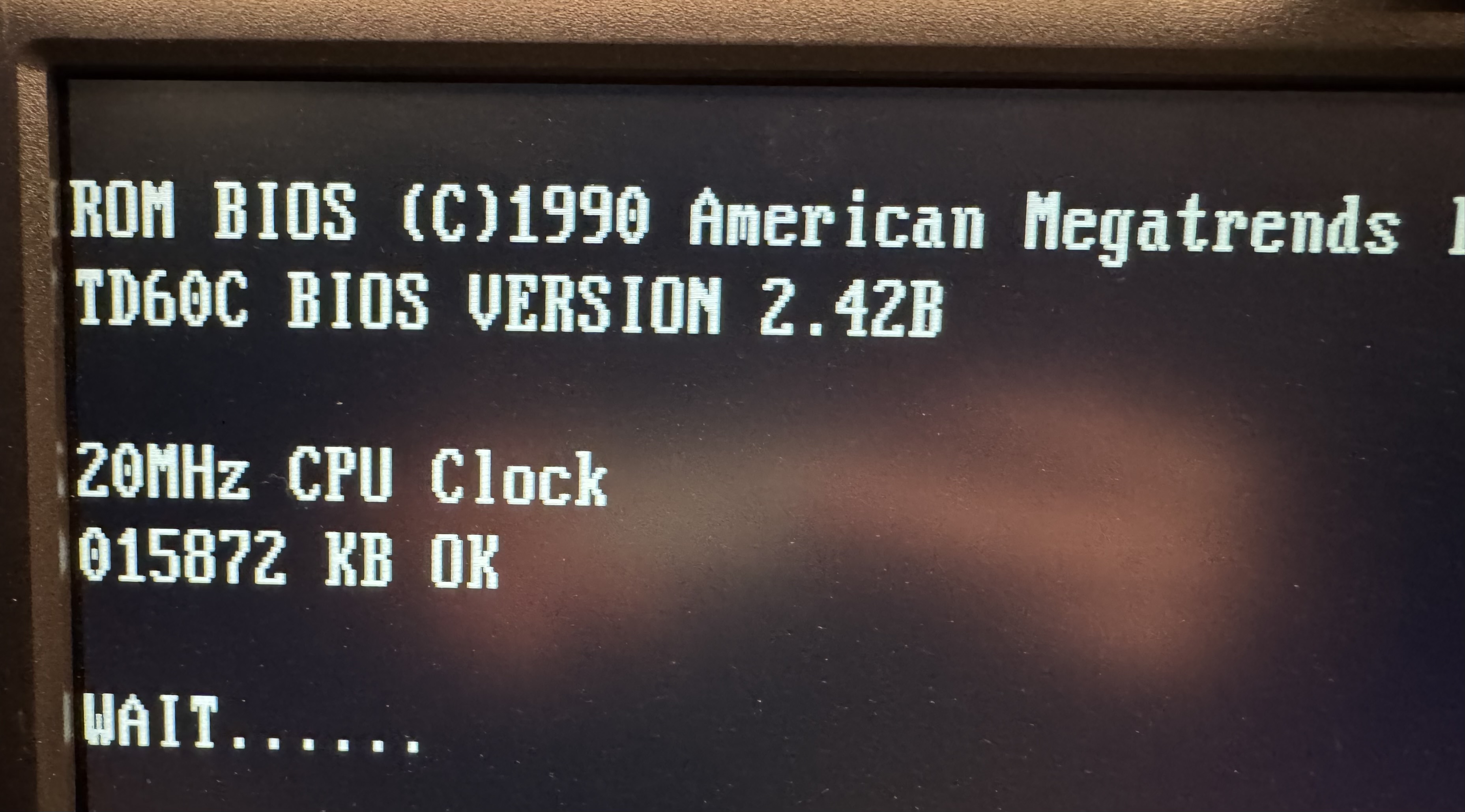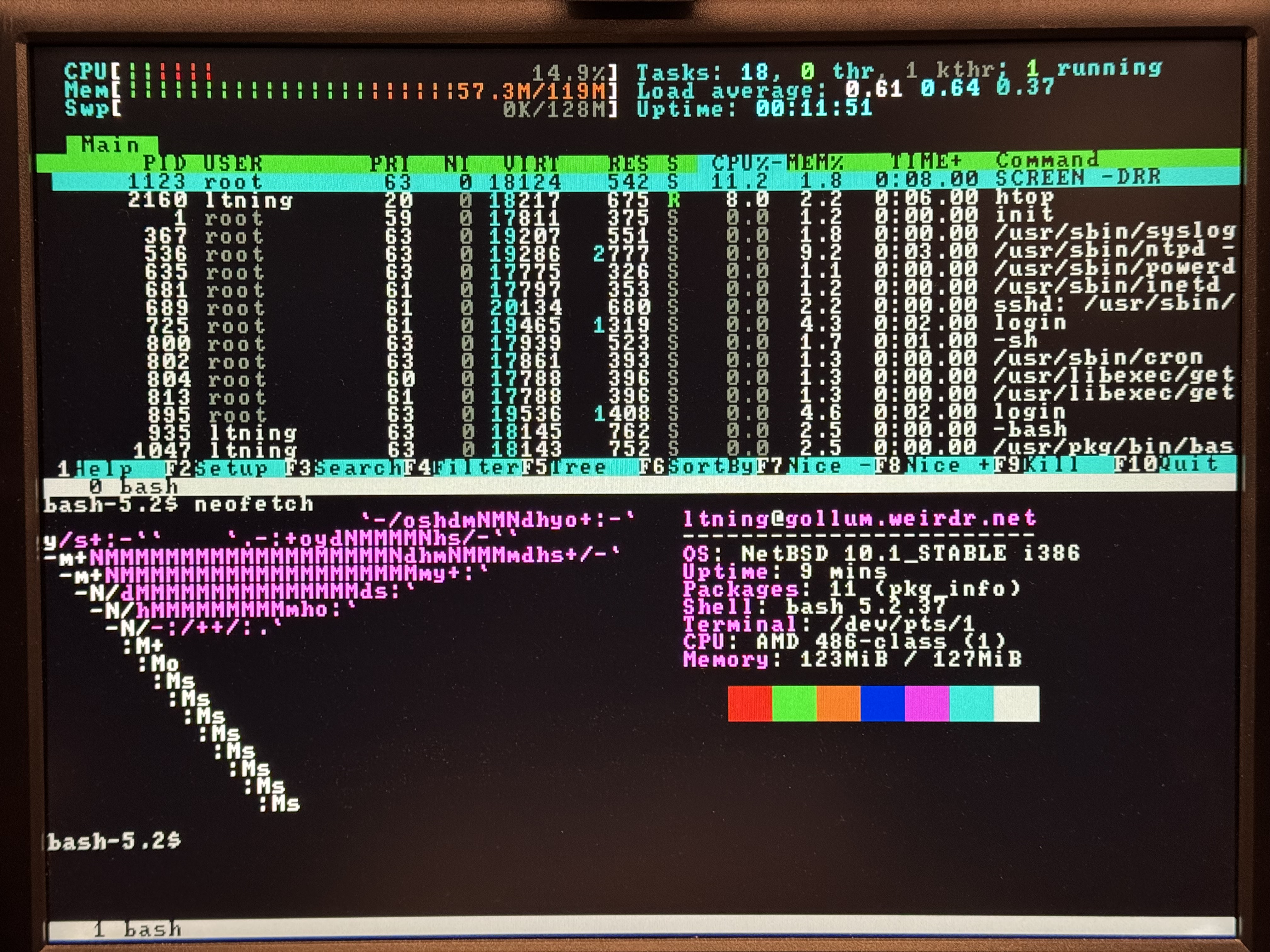Search results for tag #retrocomputing
The vintage Okimate 10 and 20 thermal color printers can print in black and white on thermal fax roll paper without a ribbon.
Here's a roll paper stand I created that you can print.
https://www.printables.com/model/1364930-okimate-1020-printer-roll-paper-holderstand
@vga256 I dug out the source code and put a small HTML wrapper around it to explain it.
This version of the code is the last version, dating back to October 1988. It includes buffering blocks in RAM to avoid the performance problem with writing each 128 byte block to disk, and two different ways to cheat and abort a perfectly good transfer to avoid getting charged.
38 years later I'm proud of the cleverness, but not proud of the cheating. ;-)
Don't get me wrong - I really like OS/2. But IBM never really made pretty things, did they?
And the alt text needs to be forced upon y'all in this one:
Short video clip showing a vector drawing of a green field with a road leading past some purple mountains in the background. There's a small blob of water next to the road. There are gradients everywhere: background, mountains, road, water..
The sun is orange (also gradient) with a drop shadow like only late 80s vector drawing software could. Corel Draw maybe? It reads "OS/2 Warp" in the top right corner.
There is an absurdly large metal pole with an even larger white sign full of names printed in a horribly-rendered font (probably System Proportional). The background of the sign is white and, thankfully, not gradient. I suspect this is due to technical limitation, not artistic ones.
@vga256 I and a friend discovered this vulnerability in 1984 or 1985, and I wrote my own little terminal program with Xmodem built in to take advantage of it. Those were the days ...
(I still have the source code and of course it was called "Leech". Back then that was a generic term for somebody who downloaded far more than they uploaded, so it was a naturally good name.)
Continuing with the IBM 5181 ...
Here we have the same image, printed using overstrike. It is marginally better looking, as the dots are more completely filled in.
Overstrike takes advantage of the fact that the printer mechanism isn't perfect, so the alignment of the head is slightly different on the second pass filling in more of the paper where the first pass might have missed.
Continuing with the IBM 5181 ...
I was recently reminded about overstrike printing to improve the print quality on older dot matrix printers and I added it to my code. This sample shows a blow-up of an image generated by the printer, with just a single pass (no overstrike). The next image will show the same image, but printed with overstrike.
Not bad for a 40+ year old low-end thermal printer. The banding is probably due to the friction-feed mechanism which is touchy and slipping.
Pictured: an IBM 5155 Portable PC, printed on an IBM 5181 printer, otherwise known as the IBM Compact Printer. It's a serial printer that uses thermal fax paper in rolls and was designed for use with the IBM PCjr. It takes data at 1200 bps.
I wrote all of the code to convert a JPG to the printer codes, except the scaling code.
The contenders: QuickView Pro version (dvpro), Digital Sound System 3.1 (dss) and MPXPlay 1.67 (mpx). The file: Astral Projection's "Bizarre Contact" from the album "Ten".
Enjoy these clips :D
I mean yeah, great, I get a proper BSD-4.4, 32-bit TCP/IP stack and tools. But it's taken me half a day. Getting the installation files over involved loading packet drivers and using #mTCP in a DOS session. Which works .. surprisingly well. But still .. FixPak43, reboot. MPTS, reboot. Netscape 2.02, reboot. Java 1.18, reboot. Feature Installer plug-in (no reboot). Then, finally, TCP/IP.
All this to have a machine to play with at #Blackvalley.
#OS2 #Retrocomputing #WhyAreYouReadingThis #GoDoSomethingUseful
Turns out Netscape 2.02 is too easy, so in this picture is IBM WebExplorer v1.1h running on OS/2 Warp Connect. Using the magic "work area" feature of folders (mark a folder as a work area to have the OS manage objects within it as a kind of unit), I can open several windows at once. True multi-process browsing 😉
#retrocomputing #browsers #floppy #museum #html #BrowserWars
Anyway, I've reduced my ambitions ever so slightly, and am now in the process of installing NetBSD (-CURRENT) on what is essentially a 386SX-class machine: 16-bit bus, 24-bit addressing, 16MB RAM, and nearly as unpleasantly slow as the 286 I had planned to use. It is however equipped with an IBM-branded 486SLC, which is from the Blue Lightning series. This one definitely has a full 486 instruction set. More hardware details will follow when I've completed the build (and installation).
Meanwhile, the obligatory screenshot from the installer. Note the ETA for simply unpacking base.tgz ..
#RunBSD #Retrocomputing #Slowcomputing
Now I need to get it properly configured and tested with DOS, then I can move on to the next steps - which involve the CPU upgrade, and assuming that works, creating actual, physical floppies.
(In other news, the #snac instance on this poor Pentium Pro server is sweating hard whenever I post something. So let me know at @ltning@anduin.net if you have problems receiving/reading my posts. I've made some tweaks but it will be unavoidably detained for a while following each post, my apologies for that..)
The latest mTCP for DOS is available!
This version includes some changes to improve TCP reliability on long running (but idle) connections, black & white Sixel graphics in Telnet, a Telnet emulation bug fix, and other small fixes sprinkled around.
The source code to NetDrive (network attached storage) is also published now - enjoy reading an unholy mix of x86 assembly code talking to Golang over UDP!
Spread the word! Friends don't let friends run old code ...
(Read the alt text for more info)
#retrocomputing #moreram
I'll post each picture as a reply to this post, as snac doesn't like multiple attachments..
Enjoy. And wish the poor box luck serving this.
So..TLS aside, what is the most lightweight reverse proxy I can use instead of nginx in front of this thing? You know, in case I would like to move the instance from this beefy PPro to, say, a #486 or a #Nintendo Wii running #NetBSD? :)
secp* curves are orders of magnitude slower than X25519 and prime256v1. At least on a Pentium Pro/Pentium II-class CPU.#retrocomputing #forgetwhatyouknow
See also my main fediverse presence: @ltning@anduin.net
About this instance, at the time of writing:
- OS: #NetBSD 10
- Reverse proxy: nginx
- CPU: Dual Pentium Pro Overdrive, 333MHz
- RAM: 512MB EDO
- NIC: 3Com 100Mbit PCI NIC
- Storage: SATA 1.0 (CF and SSD)

![[?]](https://pleroma.anduin.net/media/e42775318fd38a77b2c02300192e27e61861443424849feef9767918512fac8b.png?name=blob.png)



![[?]](https://weirdr.net/snac/ltning/s/271784d3d55493d08c915e5bb7862aaf.jpeg)




